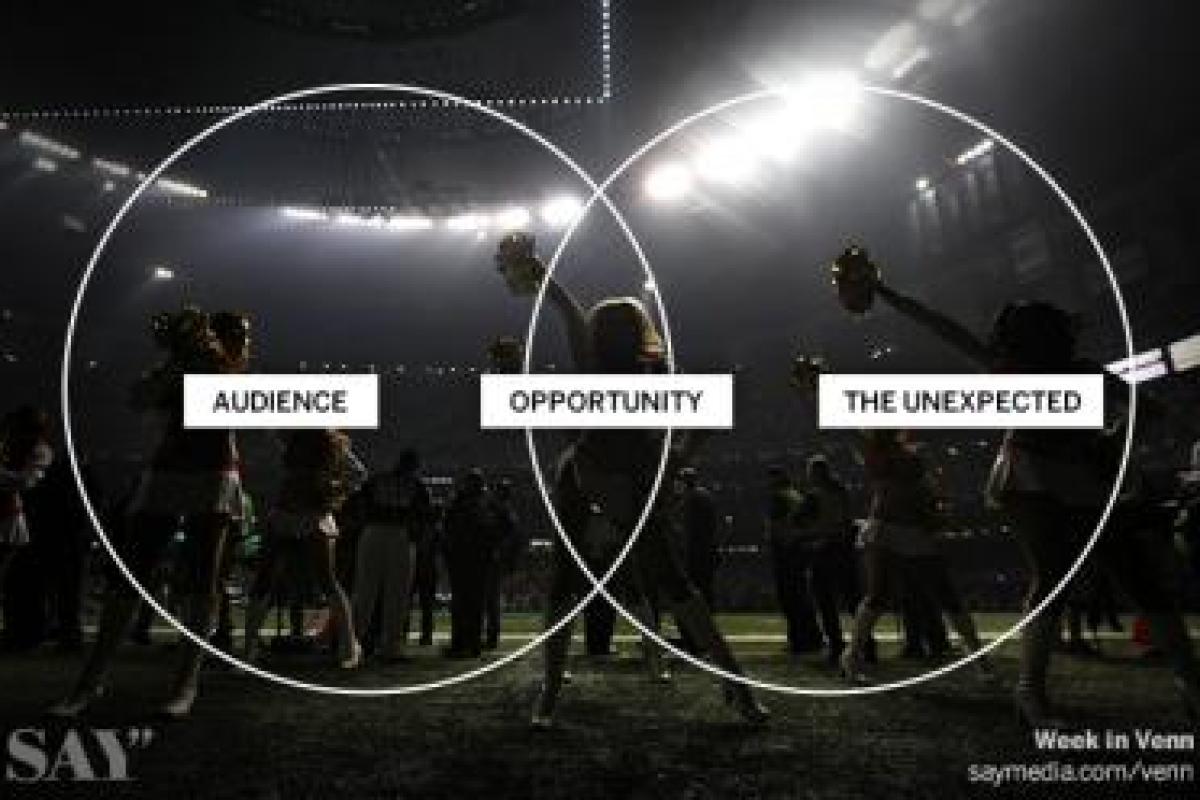Best ad of the Super Bowl? The 30 minute ad for modernizing our nation's power grid.
In the days after a raucous weekend of Super Bowl ads it bears considering: When does advertising become something other than a rush for the biggest, brightest billboard placement?
During the 30-minute Super Bowl power outage last weekend, a rare confluence of events unfolded. Significant audience + live television + potential for unexpected happening = blank slate opportunity. For some savvy marketers, the blackout was more than an inconvenience to viewers; it was an open window to capture them. Oreo's impromptu blackout tweet produced more media coverage than almost any ad during the event.
Meanwhile for the players on the field, the sudden extended timeout forced them to consider how transient the game was, that while they could not reset the clock, they might be able to reframe the time remaining. What could San Francisco do with those final 20 minutes? Could they win? Would they leave the field embarrassed by further Ravens offense? The gut check moment meant the Niners couldn’t forget their past; it was an essential token to their near-term future performance. It made for a more interesting game because Colin Kaepernick and crew had a chance to activate against the knowledge of where they had been and where they wanted to go. They grew. And they almost pulled it off.
This same analogy might be laid upon Shazam after last year’s Giants-Patriots Super Bowl. Trying to tackle attention’s rising divide across screens (even during something as centerpiece as the Super Bowl), almost a third of Big Game commercials included a Shazamable moment. While groundbreaking in its adoption during that Sunday’s telecast, the moment became something more meaningful than offering fifteen more seconds of the likes of a Go Daddy ad via audio tagging. What became evident is that very few people would pull the “fast draw” required to connect with the additional commercial content. Too many obstacles, namely: crowd control (people in between you and your TV), noise cancellation (you might have to tell your friends to shut up to capture the audio), and napkins (wiping wing sauce from your fingers before handling your phone) stood in your way.
I didn’t notice one Shazamable moment this year. No AdAge article or New York Times piece spouting the significance of the rise of TV tagging like we saw last year. The only conspicuous mobile call to action was to donate to a cause or vote for MVP via SMS. Not even a QR code on the screen (which would have been even less likely to provoke interaction). Whether it was Shazam’s decision or Bowl advertisers’, something was clear: the promise of dual screen – which many consider to be our greatest untapped “billboard” – would not be solved through simple means. The mode of use matters.
Articulating a brand message across multiple screens in front of an audience is a significant challenge. Is it an enhanced programming guide like Zeebox, an incentive laden check-in mechanism like Viggle, an audio synched social screen through IntoNow? None of them solve for the most important dysfunction here: the need for better content at the outset. HBO GO may be the exception.
After all, the best ads are those that don’t feel like ads – they feel like part of the scenery. Then brand messages become something deeper, part of the landscape, our topography, our periphery, our story, our lives.
When that happens, ads can be so much more than land grab against available media.
Read more from Say Media.
